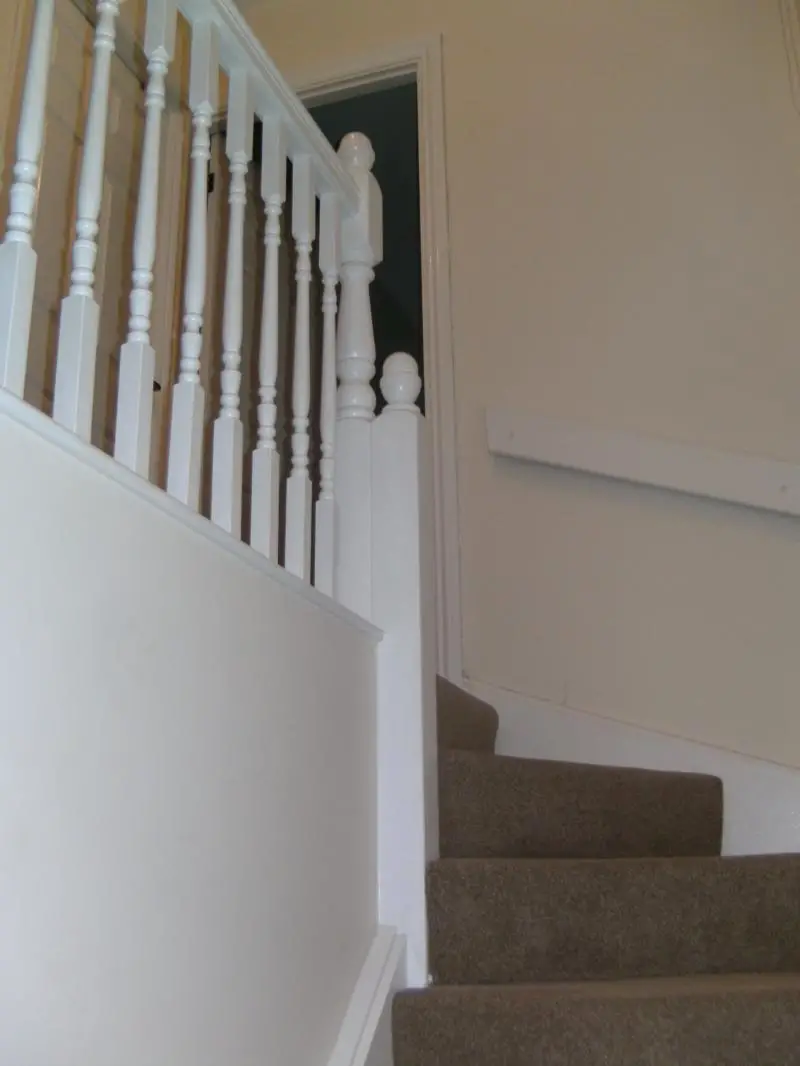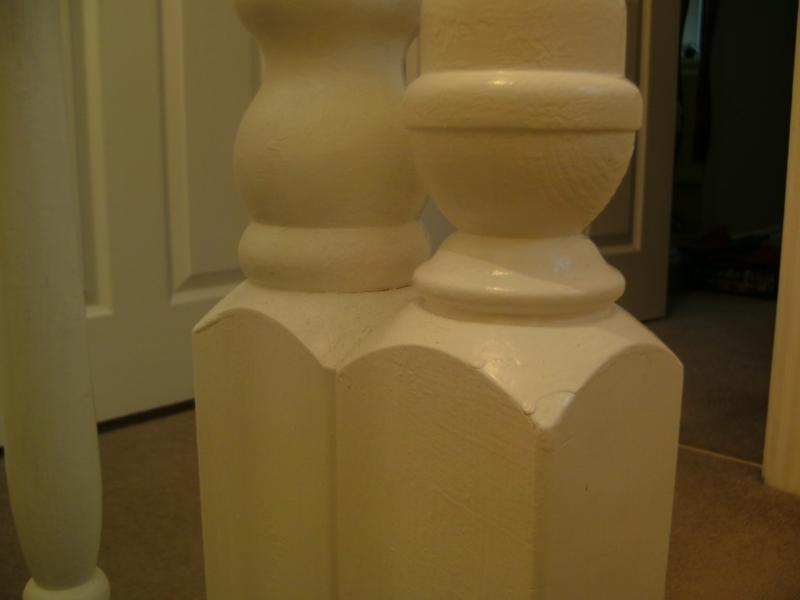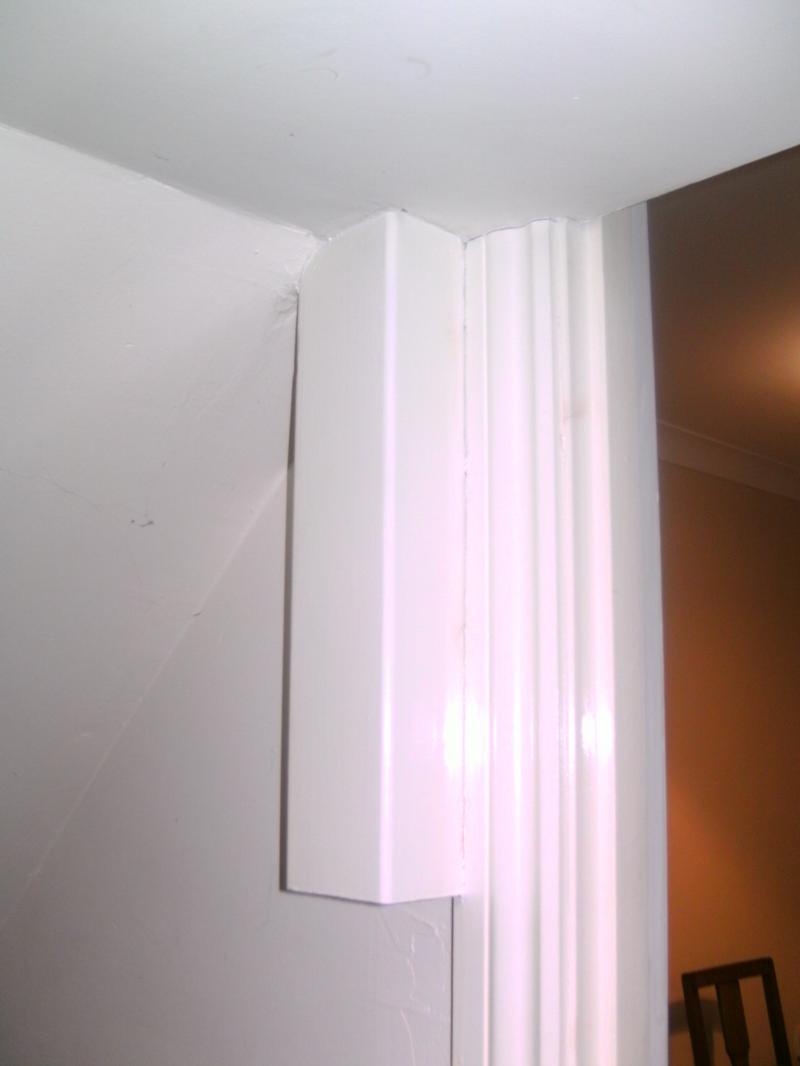Hi,
I'm usually pretty clued-up on DIY but this one's got me foxed.
The newel post at the top of my stairs is wobbly/broken... and its design is also a bit weird. It seems to be attached to another post which protrudes about 15 inches down into the under-stairs area.
The newel post (on the left) and it's buddy. The newel is wobbly/broken where the square cross-section base meets the turned part.
A close-up. You can just see the crack in the newel (on the left) where the turned part starts to flare out to meet the box section.
And just for completeness, this is where the buddy post protrudes down into the space under the stairs.
The newel seems to be bolted to the buddy.
The top of the newel wobbles about 5mm but It guess it's only going to get worse. It actually feels more loose than broken but I just can't see where to get at anything to tighten up.
Is this type of newel hollow? If I get the cap off will I find a coach-bolt type thing down in there to tighten up?? How do I get the cap off?
Or am I barking up the wrong tree? Is it just broken and the whole post needs replacing? Hope not!!! I could try a repair by putting a bolt down at an angle but I don't want to try that and find that there's already a bolt in there somewhere that a) stops me doing my repair and b) only needed tighting up in the first place.
Any advice much appreciated.
Cheers,
Dave
I'm usually pretty clued-up on DIY but this one's got me foxed.
The newel post at the top of my stairs is wobbly/broken... and its design is also a bit weird. It seems to be attached to another post which protrudes about 15 inches down into the under-stairs area.
The newel post (on the left) and it's buddy. The newel is wobbly/broken where the square cross-section base meets the turned part.
A close-up. You can just see the crack in the newel (on the left) where the turned part starts to flare out to meet the box section.
And just for completeness, this is where the buddy post protrudes down into the space under the stairs.
The newel seems to be bolted to the buddy.
The top of the newel wobbles about 5mm but It guess it's only going to get worse. It actually feels more loose than broken but I just can't see where to get at anything to tighten up.
Is this type of newel hollow? If I get the cap off will I find a coach-bolt type thing down in there to tighten up?? How do I get the cap off?
Or am I barking up the wrong tree? Is it just broken and the whole post needs replacing? Hope not!!! I could try a repair by putting a bolt down at an angle but I don't want to try that and find that there's already a bolt in there somewhere that a) stops me doing my repair and b) only needed tighting up in the first place.
Any advice much appreciated.
Cheers,
Dave




